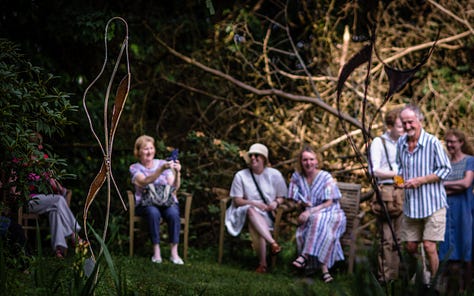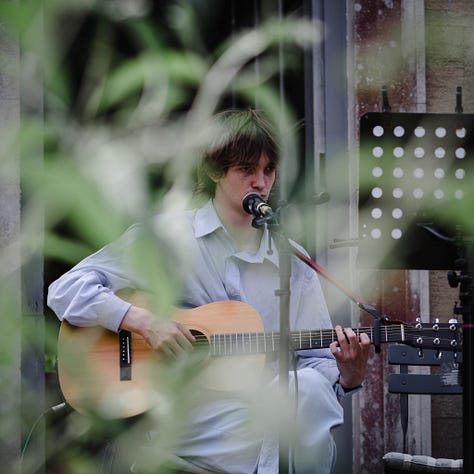Section 5.c. "Smaller-Scale Rewilding: A Practical Guide to Restoring Nature in Your Own Space"
'Practical Lessons and Takeaways About Smaller-Scale Rewilding' - the latest section of LettsSafari's guide to smaller-scale rewilding.
We’re publishing weekly instalments of our guide to smaller-scale rewilding in LettsSafari+ and your inbox - section after section, week after week. Packed with amazing photography and immersive videos straight from our parks.
If you're not already a paid member of LettsSafari, subscribe today. Get the amazing guide and help build more rewilding safari parks for the cost of a cup of coffee a month.
Practical Lessons and Takeaways About Smaller-Scale Rewilding
From the case studies and comparisons in the previous section of our guide to smaller-scale rewilding, several practical lessons emerge:
Start with what you have: Whether a 5-acre field or a 0.5-acre backlot, you can set it on a rewilding trajectory. Let natural succession happen and intervene as needed to ensure a mix of habitats.
Early wins build momentum: Many projects (Mamhead Park South, Tower of London moat, Sunrise Park) saw noticeable wildlife returns in just a year or two (more bats, insects, etc.). Publicising these wins helps gain support. Let people know. You don't need to take it as far as LettsSafari does with its community building and media platform at LettsSafari+, but you can share your experience and progress so enthusiasm grows.
Rewilding London: The Tower of London's Moat
London's Tower was once the most intimidating building in the ancient capital of the British Kingdom. Now it's a popular tourist trap, offering a view into England's once cruel punishments. Perhaps though it has transcended its ignominious history - over the last two years it has become a symbol of London's rewilding future. We visited it to understand …
Manage expectations and neighbours: Rewilding can look “messy” to some. Case studies show signage or explanation is key in public community settings (“This meadow is for pollinators!”). When others see the beauty (flowers, butterflies) or benefit (flood reduction, educational opportunities), acceptance grows.
Adaptive management: Even minimal management requires observation and adjustment. For example, LettsSafari used Soay and Badger Faces when scrub was encroaching, or cut invasive holly to let light in at Chiswick. Rewilding doesn’t mean neglect; it means guiding natural processes with light-touch interventions at the right times.
Connectivity is crucial: Lowering fences in a few places to support larger herbivore movement at LettsSafari's Dawlish Park to connect to the wider forest allowed species like black fallow to move in. In any small project, think beyond boundaries - can hedges connect to others, can a hole in a fence connect fauna, can you influence a neighbour to also go wild? A small isolated island is good, but a small connected island is far better.
Embrace unexpected species: Sometimes a plant or animal will appear that wasn’t part of the plan (wild nature loves surprises). For instance, maybe cowslips colonise your lawn once you stop mowing - great, now you have a spring meadow. Or a sparrowhawk starts hunting birds in your garden - that’s a sign your bird population is healthy enough to support a predator. Rewilding mindsets celebrate these as signs of ecosystem health, rather than viewing them as intrusions.



Human enjoyment matters: LettsSafari parks still have tracks and walking paths, photo hides, and more highlighting that these spaces are meant to be experienced. People protect what they enjoy. So a rewilded area in a community benefits from having access (footpaths or benches to watch wildlife) so residents form positive bonds with it. The silent rewilding movement LettsSafari mentions isn’t so silent in terms of human engagement - they quietly convert land, but then make noise about it in LettsSafari+ and online events to inspire others.
Scalability: A key lesson from LettsSafari’s approach is that template models can be reused - e.g., models for small gardens, large gardens, small parks, etc. They trialed them at their centre on the edge of Exeter City and now are replicating it in many other places. This templating or system is useful: if you have a successful method for, say, converting a 10-acre school campus (plant X trees, leave Y area unmown, install pond, etc.), you can share that with other schools to do the same. Standardising some practices makes adoption easier.
How To Build Your Very Own Rewilding Safari Park
LettsSafari is a pioneer and expert in smaller-scale rewilding. We have developed models for small gardens, medium and large gardens. We have also built models for small, medium and large parks. All are live and operating at our rewilding centre in Exeter, Devon. More across






